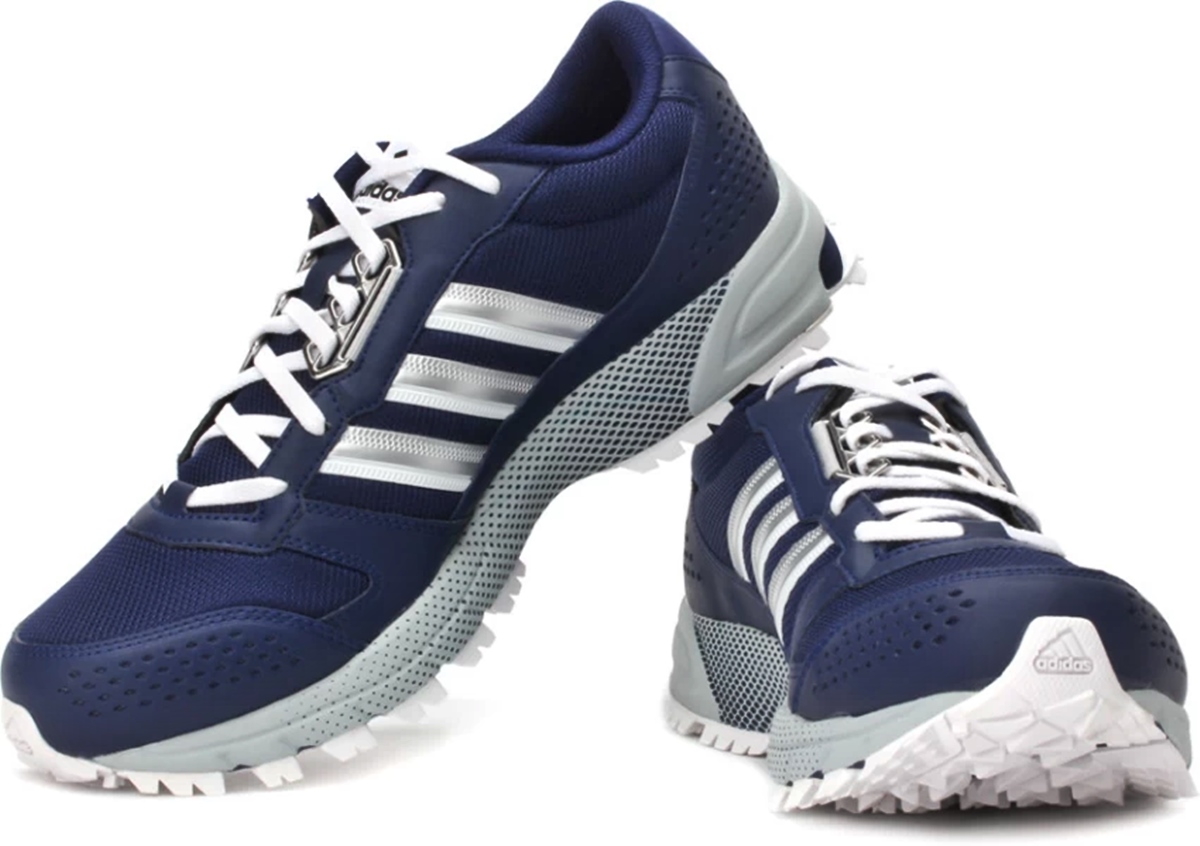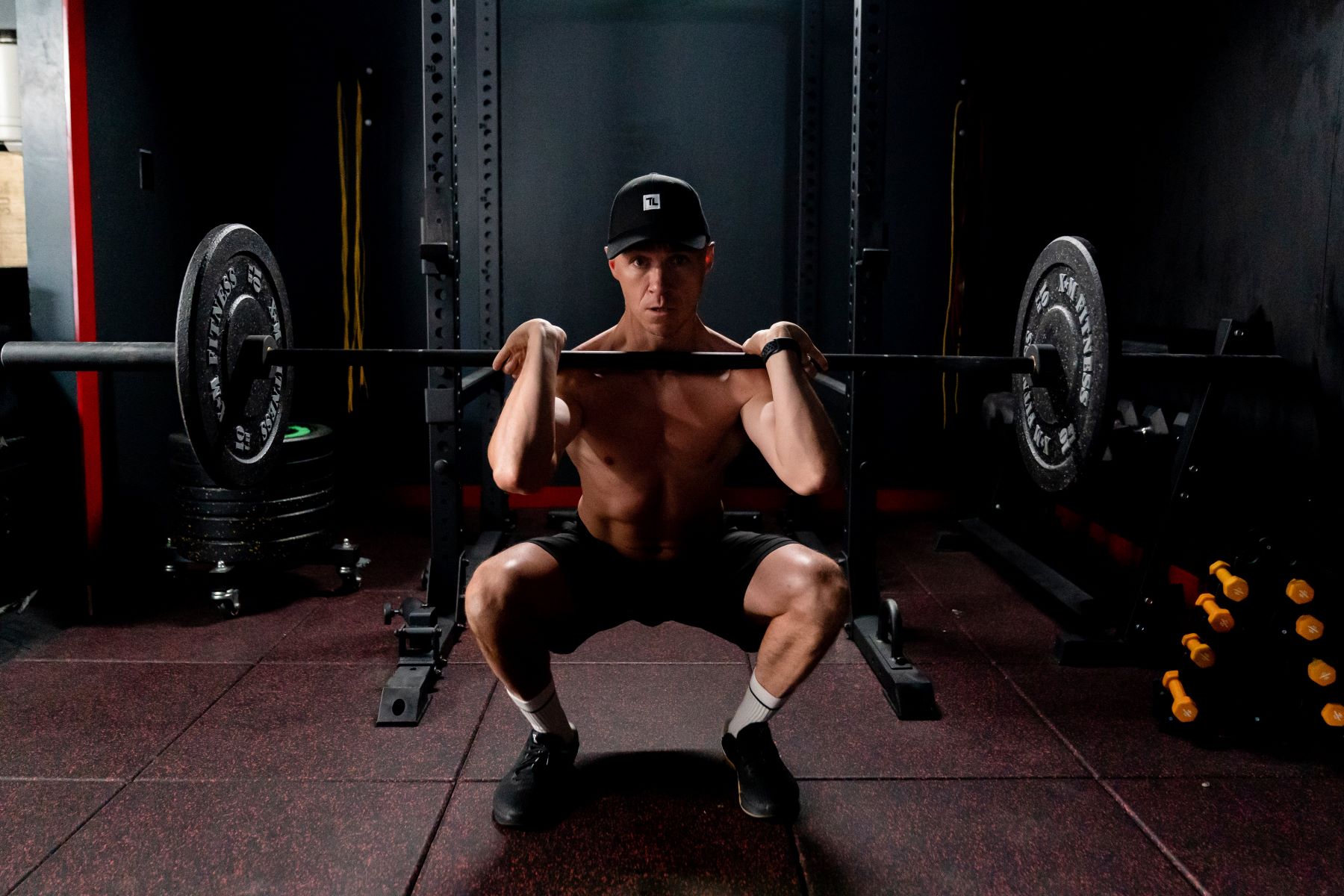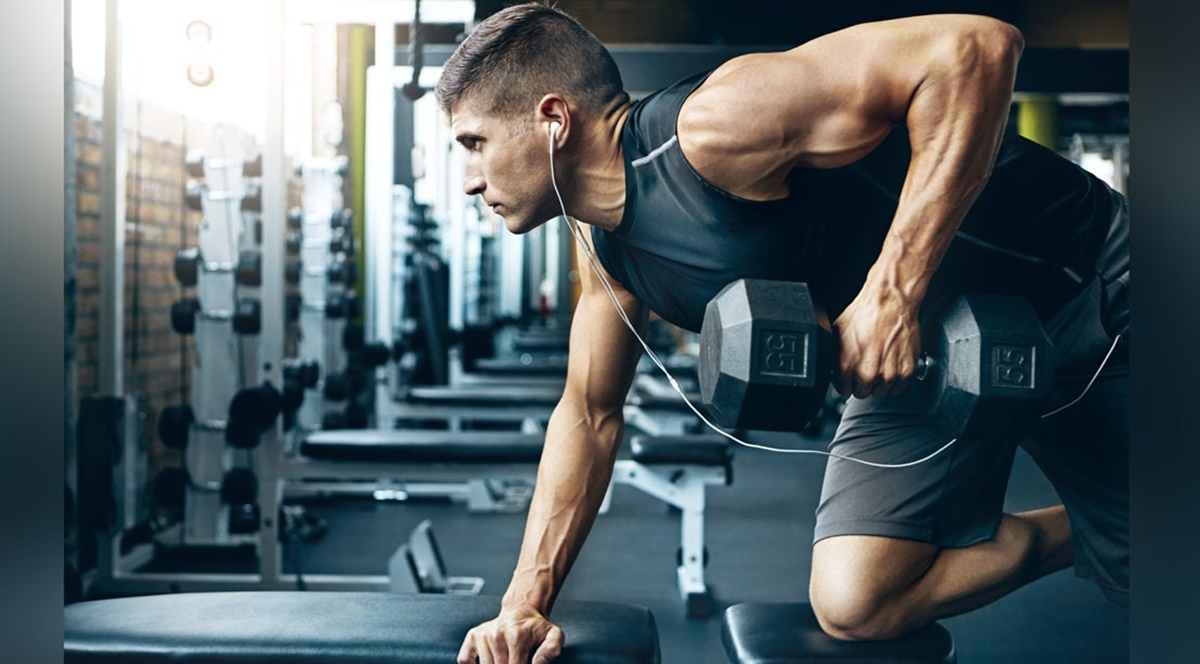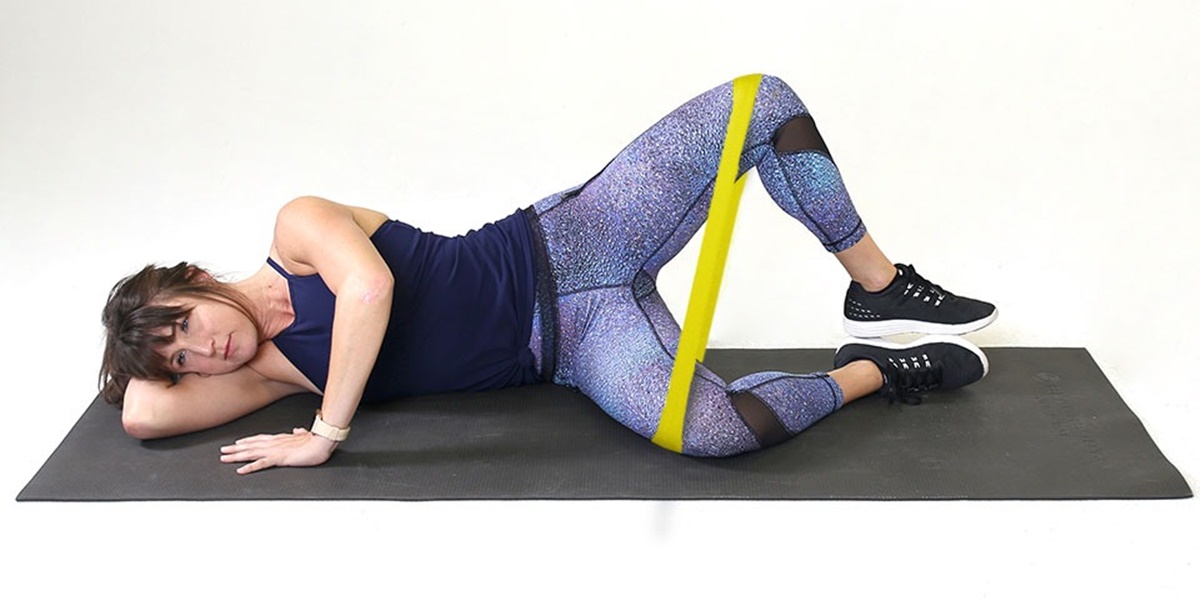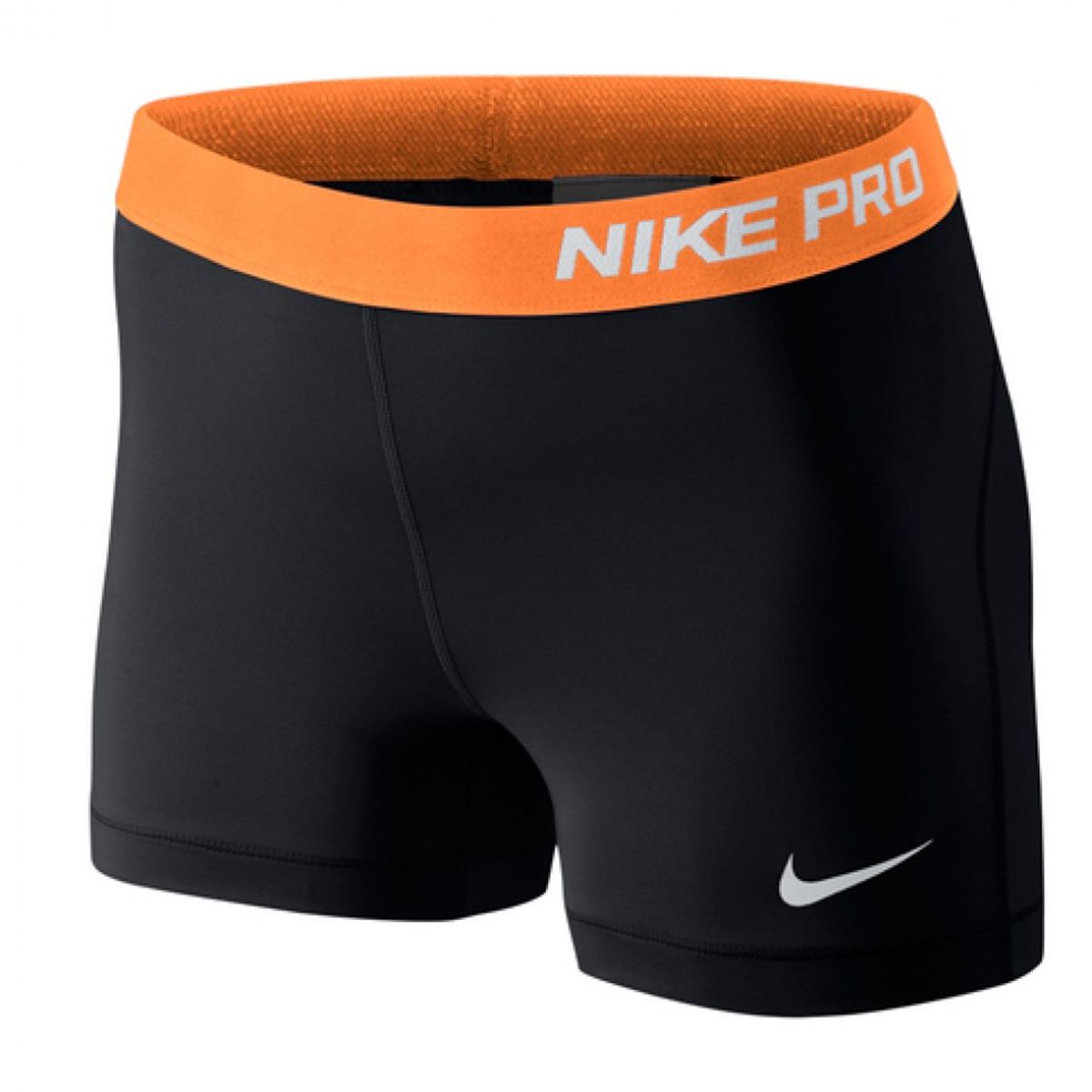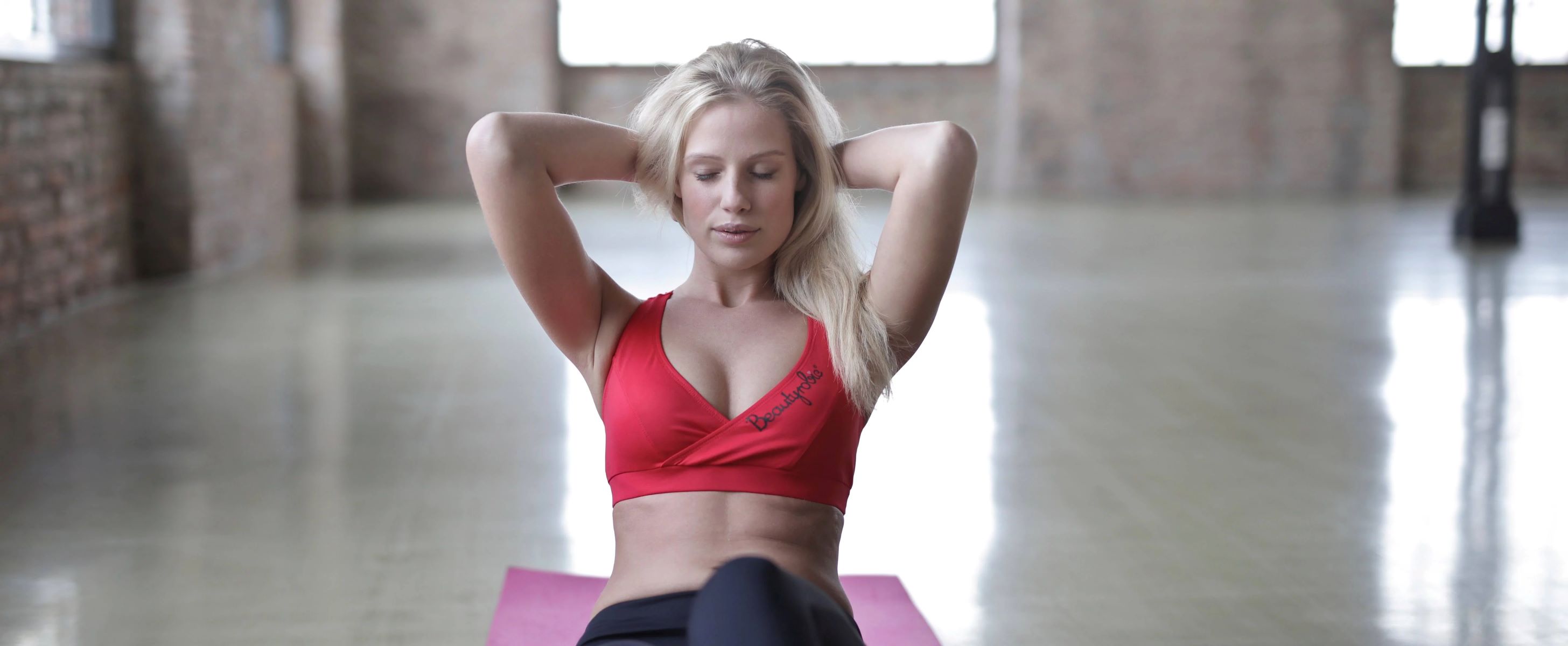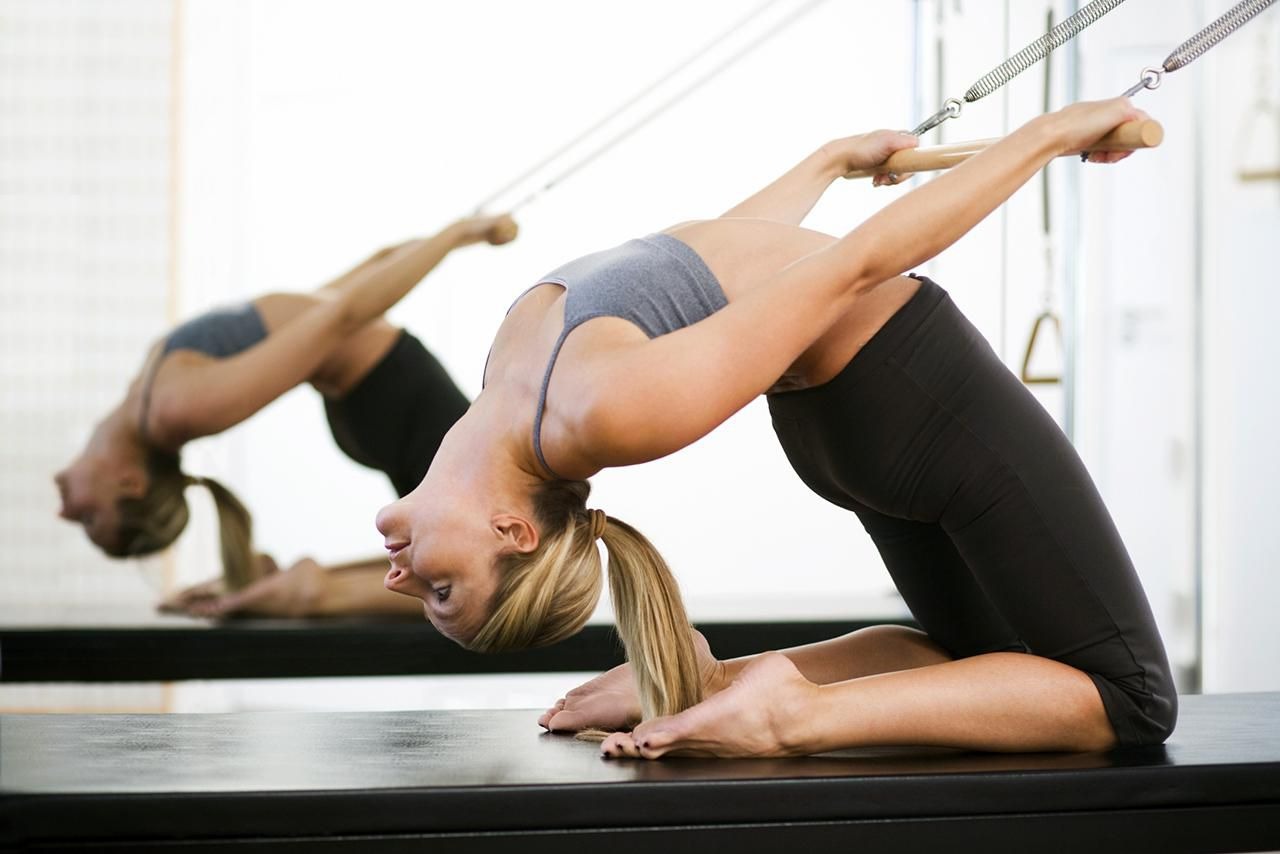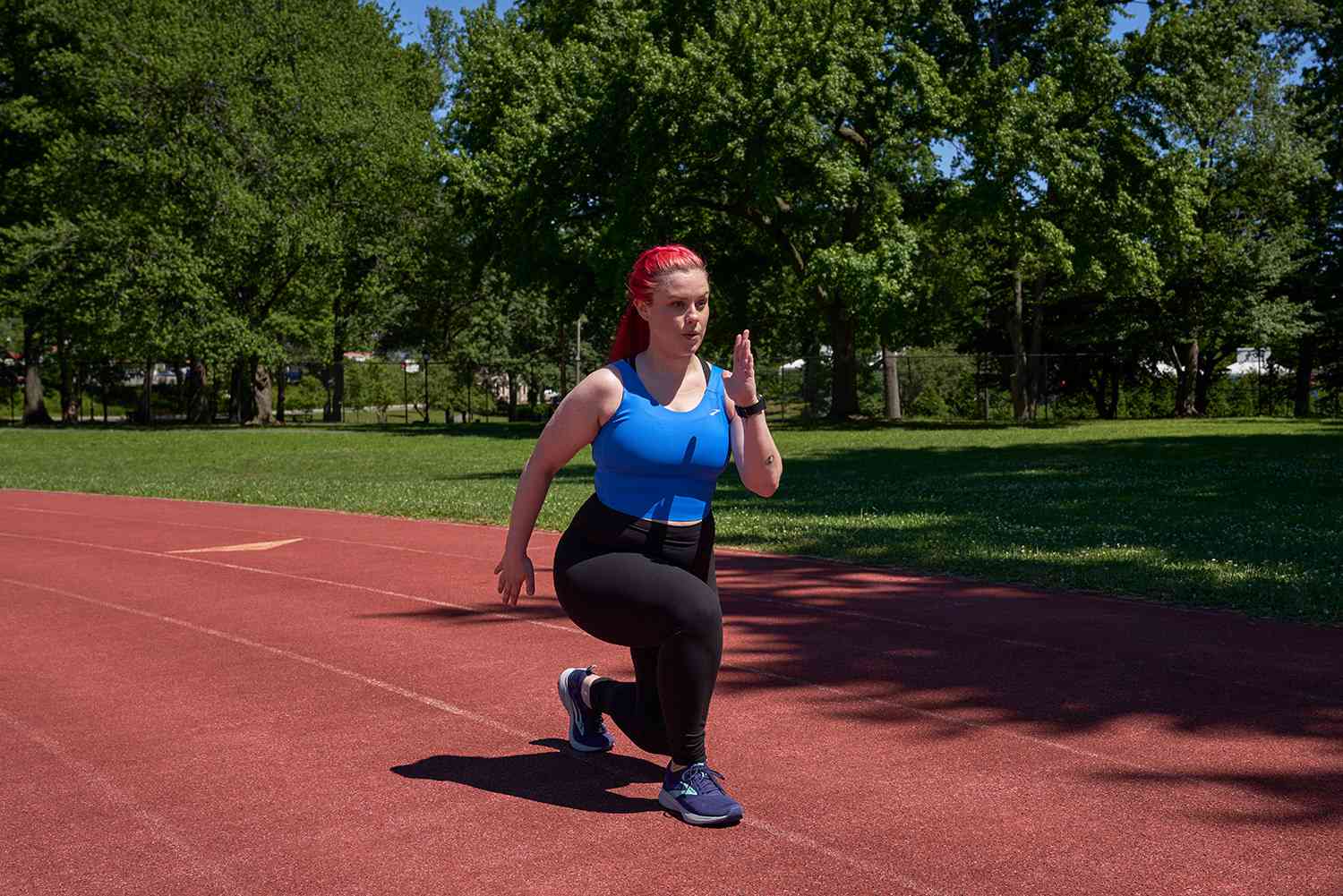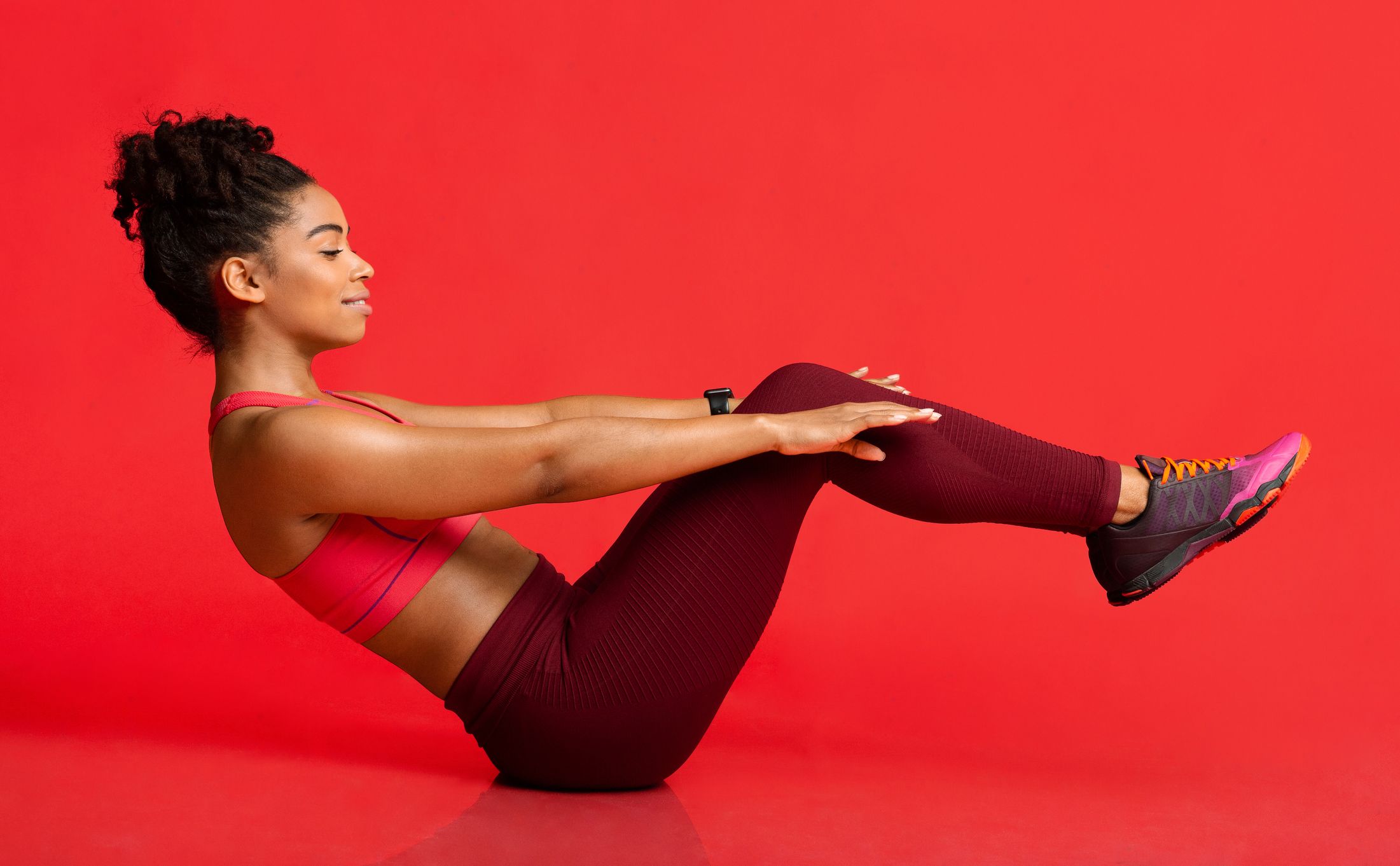

Featured
What Is Core Workout
Modified: January 2, 2024
Discover the benefits of a Featured core workout and learn how it can improve your strength, stability, and overall fitness. Incorporate these exercises into your routine for optimal results.
Introduction
Welcome to the world of core workouts! If you’re looking to strengthen your core muscles and improve your overall fitness, you’ve come to the right place. In this article, we will delve into the ins and outs of core workouts, exploring their definition, importance, benefits, and different types of exercises you can incorporate into your routine.
So, what exactly is the core? In simple terms, the core refers to the muscles in your midsection, including the abdominals, obliques, lower back, and glutes. These muscles play a crucial role in stabilizing your body, maintaining balance, and supporting your spine. A strong core not only enhances your athletic performance but also contributes to better posture, injury prevention, and overall functionality in everyday activities.
Now that you understand the significance of the core, it’s time to uncover the perks of including core workouts in your fitness regimen. Core exercises not only target specific muscle groups but also engage multiple muscles simultaneously, offering a full-body workout. They improve your overall strength, endurance, flexibility, and coordination. Additionally, a strong core can enhance your performance in other activities, such as running, weightlifting, and even yoga.
Core workouts come in a variety of forms, catering to different fitness levels and goals. From beginner-friendly exercises to intense and challenging routines for advanced fitness enthusiasts, there’s something for everyone. Not only that, but core workouts can also be tailored for specific populations, including athletes, seniors, and individuals undergoing injury rehabilitation.
However, it’s important to approach core training with caution and avoid common mistakes that could hinder your progress or lead to injury. By following proper form, gradually increasing intensity, and incorporating rest days into your routine, you can optimize the effectiveness of your core workouts and minimize the risk of overexertion.
Whether you’re a fitness newbie or a seasoned athlete, this article has you covered. We will provide you with essential tips on how to start a core workout routine, suggest equipment that can enhance your workouts, and even provide sample workout routines designed specifically for different fitness levels and goals.
So, let’s get ready to dive into the world of core workouts and unleash the power of your core muscles!
Definition of Core
The core is a term that is frequently used in the fitness world, but what exactly does it mean? The core refers to a group of muscles that make up the center of your body. It includes the muscles in your abdomen, lower back, pelvis, and glutes. These muscles work together to provide stability and support to your spine, pelvis, and hips.
When we talk about the core, we often think of the six-pack abs that are the hallmark of a strong and defined midsection. While the rectus abdominis muscles are a part of the core, there is much more to it. The core also includes muscles such as the transverse abdominis, obliques, erector spinae, and hip muscles like the gluteus maximus.
The core muscles are primarily responsible for maintaining proper posture, supporting the spine, and transferring force between the upper and lower body. They play a crucial role in everyday movements such as bending, twisting, lifting, and even sitting or standing upright.
When these core muscles are weak or imbalanced, it can lead to poor posture, back pain, and increased risk of injury. Therefore, developing a strong and functional core is essential for overall fitness and well-being.
It’s important to note that the core is not just about having a six-pack or achieving a specific aesthetic. While a lean and defined midsection can be a byproduct of a strong core, the primary focus should be on improving the functionality and strength of these muscles.
Now that we have a clear understanding of what the core is, it’s time to explore the importance of incorporating core workouts into your fitness routine. By targeting these muscles through specific exercises, you can build strength, balance, and stability, leading to improved performance in various physical activities and reducing the risk of injuries.
Importance of Core Workout
A strong core is not only aesthetically pleasing but also vital for overall health and fitness. Core workouts, focused on strengthening and stabilizing the muscles in your midsection, offer numerous benefits that go beyond just a sculpted physique. Let’s dive into the importance of including core workouts in your exercise routine.
First and foremost, a strong core improves your posture. The core muscles provide stability to your spine, helping you maintain good alignment and preventing slouching or rounding of the shoulders. By improving your posture, you can reduce the strain on your neck, back, and hips, leading to decreased discomfort and improved overall spinal health.
Core workouts also enhance your balance and stability. The core muscles play a key role in maintaining balance by supporting your body’s center of gravity. By strengthening your core, you can improve your ability to stabilize and stay balanced during various movements, whether it be standing on one leg or performing dynamic exercises.
Another important benefit of core workouts is improved athletic performance. The core is the powerhouse of the body, providing stability and transferring force between your upper and lower extremities. By developing a strong and stable core, you can generate more power and efficiency in your movements, whether you’re running, jumping, or lifting weights. This can lead to improved performance in sports and activities that require explosive movements or sudden changes in direction.
In addition to enhancing performance, core workouts also contribute to injury prevention. A weak core can lead to imbalances in the muscles surrounding the spine and pelvis, increasing the risk of lower back injuries and other musculoskeletal issues. By strengthening the core muscles, you can create a stable and supportive foundation for your body, reducing the likelihood of injuries during physical activities or even in everyday movements.
A strong core also improves your overall functional fitness. Whether you’re lifting groceries, carrying your child, or performing household chores, a strong core allows you to move with greater ease and efficiency. By developing core strength, you can perform these daily activities with reduced strain on your body and improved energy efficiency.
Lastly, core workouts can aid in weight management. While spot reduction is not possible, engaging in regular core exercises can contribute to an increase in overall muscle mass. As muscle is more metabolically active than fat, having a higher percentage of muscle can boost your basal metabolic rate, helping you burn more calories even at rest.
Incorporating core workouts into your fitness routine is essential for maximizing your functional fitness, improving posture, enhancing athletic performance, reducing the risk of injury, and maintaining a healthy weight. The next section will delve into the specific benefits of core workouts in greater detail.
Benefits of Core Workout
Core workouts offer a wide range of benefits that go beyond achieving a toned midsection. By engaging in targeted exercises that strengthen and stabilize the muscles in your core, you can experience significant improvements in your overall fitness and well-being. Let’s explore some of the key benefits of incorporating core workouts into your exercise routine.
1. Enhanced Posture: A strong core provides the support and stability needed for good posture. By strengthening the muscles in your abdomen, lower back, and pelvis, you can improve your spinal alignment and reduce the risk of slouching or hunching over. This not only promotes better posture but also helps alleviate discomfort and strain in the neck, shoulders, and back.
2. Increased Stability and Balance: Core workouts target the deep muscles that help stabilize your body. By improving the strength and coordination of these muscles, you can enhance your overall balance and stability. This is particularly beneficial for older adults, as it reduces the risk of falls and related injuries.
3. Improved Athletic Performance: A strong core forms the foundation for nearly all movements. Whether you’re running, jumping, lifting weights, or playing a sport, a solid core enhances your overall athletic performance. It allows for better force transfer between your upper and lower body, resulting in more efficient movement and increased power output.
4. Injury Prevention: Weak core muscles can lead to imbalances and compensations, increasing the risk of injuries, particularly in the lower back and hips. By strengthening the core, you can stabilize your spine and pelvis, reducing the risk of strains, sprains, and other musculoskeletal injuries.
5. Improved Functional Strength: Core workouts focus on functional movements, meaning exercises that mimic activities you perform in daily life. By training the muscles involved in these movements, you can improve your overall functional strength and perform everyday tasks with greater ease and efficiency.
6. Enhanced Breathing and Digestion: The muscles of the core play a role in proper breathing mechanics and digestive function. By strengthening these muscles, you can support optimal diaphragmatic breathing, which can improve lung capacity and oxygen supply to the body. Additionally, a strong core can aid in healthy digestion by promoting proper organ function and reducing gastrointestinal discomfort.
7. Boosted Metabolism and Weight Management: Engaging in core workouts can contribute to an increase in overall muscle mass. As muscle is more metabolically active than fat, having a higher muscle percentage can boost your metabolism, helping you burn more calories even at rest. Additionally, core exercises can engage multiple muscle groups, resulting in a higher calorie burn during your workouts.
8. Enhanced Overall Fitness: Core workouts provide a holistic approach to fitness by engaging multiple muscle groups and improving overall body strength, stability, and flexibility. By incorporating these exercises into your routine, you can enhance your overall fitness and well-being.
These are just some of the many benefits that come from regularly engaging in core workouts. Whether you’re a fitness enthusiast, an athlete, or simply looking to improve your overall health, incorporating core exercises into your routine can have a profound impact on your well-being and physical performance.
Core Muscles
When we talk about core training, it’s important to understand the specific muscles that make up the core. These muscles work together to provide stability, support, and functionality to your body. Let’s explore the key core muscles and their roles in maintaining a strong and stable core.
1. Rectus Abdominis: The rectus abdominis, commonly known as the “six-pack” muscles, runs vertically along the front of your abdomen. These muscles allow for flexion of the spine and contribute to forward bending movements.
2. Transverse Abdominis: The transverse abdominis is a deep muscle that wraps around your midsection like a corset. It offers stability to the spine and core by compressing the abdominal contents and providing support during movements.
3. Obliques: The oblique muscles are located on the sides of your abdomen. There are two sets: the external obliques, which run diagonally down from the lower ribs to the pelvis, and the internal obliques, which run diagonally in the opposite direction. These muscles allow for rotation and side-bending movements of the torso.
4. Erector Spinae: The erector spinae muscles are a group of muscles that run along either side of the spine. They help extend and rotate the spine, contributing to maintaining an upright posture and providing support to the back.
5. Multifidus: The multifidus muscles are small, deep muscles located in the back along the spine. They play a crucial role in stabilization, providing support to the vertebrae and assisting in maintaining proper spinal alignment.
6. Gluteus Maximus: While many people primarily associate the gluteus maximus with the buttocks, it is also an integral part of the core. The glutes are responsible for hip extension and contribute to the stability and power of the pelvis.
In addition to these key muscles, the core also includes other muscles such as the hip flexors, hip adductors and abductors, and the pelvic floor muscles. These muscles work together to create a strong and stable core, allowing for optimal movement, performance, and support of the spine and pelvis.
It’s important to note that core training involves targeting all these muscles and not just the superficial rectus abdominis. By focusing on strengthening and balancing all the core muscles, you can achieve a well-rounded and functional core that enhances your performance, stability, and overall fitness.
Types of Core Exercises
When it comes to core workouts, there is a wide range of exercises you can incorporate into your routine. These exercises target various core muscles, providing a comprehensive workout that strengthens and stabilizes your midsection. Let’s explore some of the common types of core exercises you can include in your training:
- Planks: Planks are a versatile exercise that targets the entire core, including the rectus abdominis, transverse abdominis, and the muscles in your back and glutes. To perform a plank, assume a push-up position with your forearms on the ground, elbows under your shoulders, and toes tucked under. Hold the position for a certain amount of time, engaging your core muscles and maintaining proper alignment.
- Crunches: Crunches specifically target the rectus abdominis. Lie on your back with your knees bent and feet flat on the ground. Lift your head, neck, and shoulders off the ground, engaging your core muscles, and slowly lower back down. Remember to avoid pulling on your neck and focus on using your abdominal muscles to perform the movement.
- Russian Twists: Russian twists engage the oblique muscles. Sit on the ground with your knees bent and feet lifted off the ground. Lean back slightly, create a V shape with your torso and thighs, and hold your hands together in front of your chest. Twist your torso from side to side, touching the ground on each side with your hands.
- Deadbugs: Deadbugs target the deep core muscles, including the transverse abdominis and multifidus. Lie on your back with your arms extended towards the ceiling and your knees bent at a 90-degree angle. Slowly lower one arm and the opposite leg towards the ground while keeping your core engaged and your lower back pressed into the floor. Return to the starting position and repeat on the other side.
- Mountain Climbers: Mountain climbers are a dynamic exercise that engages the entire core. Start in a high plank position with your hands directly under your shoulders. Bring one knee towards your chest, then quickly switch legs in a running motion. Maintain a steady pace and engage your core as you alternate your legs.
- Side Planks: Side planks target the oblique muscles and also engage the transverse abdominis. Lie on your side with your forearm on the ground and your elbow under your shoulder. Lift your hips off the ground, creating a straight line from your head to your feet. Hold the position for a certain amount of time, then switch to the other side.
These are just a few examples of core exercises you can incorporate into your workouts. Remember to focus on proper form and engage your core muscles throughout each exercise. It’s also important to vary your exercises and progress the intensity over time to continue challenging your core and achieving optimal results.
Common Core Workout Mistakes to Avoid
When it comes to core workouts, it’s important to perform the exercises with proper technique and form to ensure maximum effectiveness and minimize the risk of injury. Unfortunately, there are some common mistakes that people often make when engaging in core exercises. Let’s highlight some of these mistakes and how to avoid them:
- Relying too much on momentum: One of the most common mistakes is using momentum rather than engaging the core muscles to perform the exercises. It’s important to focus on controlled movements and consciously engage the core to carry out each exercise. Avoid swinging your body or using momentum to complete the repetitions.
- Neglecting proper breathing: Breathing is often overlooked during core workouts, but it plays a crucial role in maintaining stability and optimizing performance. It’s essential to breathe deeply and exhale on the most challenging part of the movement. Proper breathing helps to engage the deep core muscles and ensures proper oxygen flow to the working muscles.
- Overarching or rounding the back: Maintaining a neutral spine is key during core exercises. Avoid overarching or rounding the back, as this can lead to unnecessary strain on the spine. Focus on keeping the spine aligned and engage the core muscles to stabilize the spine throughout each exercise.
- Not engaging the entire core: The core consists of more than just the rectus abdominis (six-pack muscles). It’s essential to engage all the core muscles, including the transverse abdominis, obliques, erector spinae, and glutes. Neglecting any of these muscles can lead to imbalances and hinder overall core strength.
- Not progressing the difficulty: To continue seeing progress, it’s important to challenge your core muscles by gradually increasing the difficulty of your exercises. This can be done by adding resistance, using unstable surfaces, or incorporating more advanced variations of the exercises. Stagnating at the same level of difficulty can limit your progress and results.
- Favoring quantity over quality: It’s common for individuals to focus on performing a high number of repetitions rather than focusing on quality movements. Instead of rushing through the exercises, prioritize proper form, and technique. Quality movements with fewer repetitions are often more effective than mindlessly performing a large number of repetitions.
- Not allowing for rest and recovery: Rest and recovery are just as important as the workouts themselves. Overtraining the core muscles can lead to fatigue, decreased performance, and an increased risk of injury. Make sure to allow plenty of rest between core workouts and incorporate rest days into your fitness routine.
Avoiding these common core workout mistakes will help you optimize your training, prevent injuries, and achieve better results. Remember to focus on proper form, engage all the core muscles, progress the difficulty, and allow for adequate rest and recovery. By doing so, you’ll maximize the benefits of your core workouts and promote long-term strength and stability.
How to Start a Core Workout Routine
Starting a core workout routine can be both exciting and intimidating, especially if you’re new to fitness or haven’t focused much on your core muscles before. However, with the right approach and guidance, you can establish a solid foundation for a strong and functional core. Here are some steps to help you get started:
- Evaluate your current fitness level: Before diving into a core workout routine, it’s essential to assess your current fitness level. Take into consideration any previous injuries or limitations that may impact your ability to perform certain exercises. This self-assessment will help you set realistic goals and choose appropriate exercises.
- Learn proper form and technique: Proper form and technique are crucial for maximum effectiveness and injury prevention. Consider working with a certified fitness professional, such as a personal trainer or physiotherapist, to learn the correct form for various core exercises. They can provide guidance on alignment, breathing techniques, and modifications based on your fitness level and individual needs.
- Start with foundational exercises: Begin your core workout routine with foundational exercises that target all the major core muscles. This might include exercises like planks, deadbugs, bridges, and bird-dogs. These exercises lay the groundwork for core strength and stability before progressing to more advanced movements.
- Gradually increase intensity: As your core strength improves, gradually increase the intensity of your workouts. This can be done by adding resistance such as weights or resistance bands, increasing the duration of your holds, or incorporating more challenging variations of the exercises. Progressing gradually helps avoid overexertion and allows your muscles to adapt and grow stronger over time.
- Include variety and balance: To ensure well-rounded core development, incorporate a variety of exercises that target different muscles and movement patterns. Include exercises for the rectus abdominis, obliques, transverse abdominis, erector spinae, and glutes. Aim for a balance between exercises that target flexion, extension, rotation, and lateral movements of the core.
- Listen to your body: Pay attention to any discomfort or pain during your core workouts. It’s normal to feel a burn or fatigue in the muscles, but sharp or persistent pain could indicate improper form or overexertion. If you experience any pain or discomfort, modify the exercise or consult with a healthcare professional to ensure you’re performing the movements safely.
- Consistency is key: Like any fitness routine, consistency is key for results. Aim to incorporate core workouts into your exercise routine at least two to three times per week. Consistent training allows your muscles to adapt and grow stronger over time, leading to improved core strength and stability.
- Don’t forget about rest and recovery: Rest and recovery are vital for overall progress. Give your core muscles adequate time to rest and recover between workouts. This allows for muscle repair and growth, reducing the risk of overuse injuries. Consider incorporating rest days or alternating between core and other muscle group workouts to allow for proper recovery.
Starting a core workout routine may seem daunting at first, but by following these steps and staying consistent, you’ll gradually see improvements in your core strength, stability, and overall fitness. Remember to start with foundational exercises, gradually increase intensity, listen to your body, and prioritize rest and recovery. With dedication and patience, you’ll be on your way to a stronger and more functional core.
Equipment for Core Workout
When it comes to core workouts, you don’t necessarily need fancy equipment to strengthen and engage your core muscles. However, incorporating certain pieces of equipment can add variety and challenge to your routines. Here are some equipment options that can enhance your core workouts:
- Exercise Mat: An exercise mat provides cushioning and support during floor-based core exercises. It can help you maintain stability and comfort while performing exercises such as planks, crunches, and bridges. Look for a mat that provides sufficient thickness and grip to ensure proper form and prevent slipping.
- Stability Ball: A stability ball, also known as a Swiss ball or exercise ball, is an excellent tool for challenging and engaging your core muscles. It adds an element of instability, forcing your core muscles to work harder to maintain balance. You can perform exercises like stability ball crunches, planks, bridges, and even use the ball as a bench for upper body exercises.
- Resistance Bands: Resistance bands are versatile and portable, making them an ideal addition to your core workout routine. They provide external resistance, increasing the challenge and intensity of your exercises. You can use resistance bands to perform exercises such as standing or seated rotations, woodchoppers, and standing side leg lifts to target your core muscles from different angles.
- Dumbbells or Kettlebells: Incorporating dumbbells or kettlebells can add an extra dimension of challenge to your core workouts. They can be used for exercises like Russian twists, weighted side bends, and weighted planks. Start with a weight that allows you to maintain proper form and gradually increase the resistance as your strength improves.
- Medicine Ball: A medicine ball is a weighted ball that can be used to add resistance and instability to your core exercises. It can be held, tossed, or used in combination with other movements to engage your core muscles in a dynamic way. Medicine ball exercises, such as sit-up throws, overhead slams, and rotational throws, challenge your core muscles to stabilize and generate power.
- TRX Suspension Trainer: The TRX Suspension Trainer is a highly effective tool for core training. It uses suspension straps anchored to a stable structure to perform a wide range of exercises that target the core muscles. By adjusting the angle and position of your body, you can increase or decrease the resistance and challenge your core from various angles.
- Pilates Ring: Also known as a magic circle or resistance ring, the Pilates ring is a flexible circle-shaped tool that provides resistance for a variety of Pilates-inspired core exercises. It adds challenge and engagement to exercises like inner thigh squeezes, pelvic curls, and side leg lifts.
Remember, while equipment can enhance your core workouts, it’s not essential. Many effective core exercises can be performed using just your bodyweight. However, incorporating equipment can add variety, progression, and increased resistance to your routines, challenging your core muscles in new ways. Choose the equipment that aligns with your goals, fitness level, and preferences, and always ensure proper form and safety while using it.
Sample Core Workout Routine
A well-rounded core workout routine should target all the major muscles of the core while providing a balance of strength, stability, and flexibility exercises. Here is a sample core workout routine that you can incorporate into your fitness regimen:
- Plank: Start with a forearm plank, holding the position for 30 seconds to 1 minute. Focus on engaging your core and maintaining proper alignment. Gradually increase the duration as you progress.
- Crunches: Perform 10 to 15 controlled crunches, focusing on engaging your abdominal muscles and avoiding neck strain. You can place your hands lightly behind your head or crossed over your chest. Remember to exhale as you crunch and keep a neutral spine.
- Mountain Climbers: Do 10 to 15 mountain climbers on each leg. Start in a high plank position and alternate bringing your knees toward your chest in a running motion. Keep your core engaged and your hips level throughout the exercise.
- Side Plank: Hold a side plank on each side for 30 seconds to 1 minute. Stack your feet or modify by placing the top foot in front of the bottom foot for added stability. Keep your core engaged and your body in a straight line from head to toe.
- Deadbugs: Perform 8 to 10 repetitions of deadbugs, alternating sides. Lie on your back with your arms and legs in the air. Slowly lower one arm and the opposite leg to the ground while maintaining a neutral spine. Return to the starting position and repeat on the other side.
- Bridge: Complete 10 to 15 bridges. Lie on your back with your knees bent and feet flat on the ground. Lift your hips off the ground, squeezing your glutes and engaging your core. Hold the bridge for a few seconds before returning to the starting position.
- Russian Twists: Perform 10 to 15 Russian twists on each side. Sit on the ground with your knees bent and feet lifted off the ground. Hold a weight or medicine ball in front of your chest, and twist your torso from side to side, touching the weight to the ground on each side.
- Flutter Kicks: Finish with 30 seconds to 1 minute of flutter kicks. Lie on your back with your legs extended and lift them slightly off the ground. Alternate kicking your legs up and down in a fluttering motion while keeping your core engaged.
Perform this core workout routine two to three times per week, allowing at least one day of rest between sessions. Start with a number of repetitions and duration that challenges you but allows you to maintain proper form. As you become more comfortable and stronger, gradually increase the number of repetitions, duration, or difficulty of the exercises.
Remember to focus on quality movements, engaging the core muscles, and maintaining proper form throughout each exercise. If any exercise causes pain or discomfort, modify or omit it from your routine and consult with a fitness professional if needed.
Feel free to add or substitute exercises based on your preferences and fitness level. The key is to consistently challenge and engage your core muscles to achieve strength, stability, and functional fitness.
Core Workout for Beginners
If you’re new to core workouts, it’s important to start with exercises that are appropriate for your fitness level and gradually progress as you build strength and stability. Here is a sample core workout specifically designed for beginners:
- Modified Plank: Begin with a modified plank by resting on your forearms and knees instead of your toes. Hold the position for 20 to 30 seconds, focusing on engaging your core and maintaining proper alignment.
- Supine Pelvic Tilt: Lie on your back with your knees bent and feet flat on the ground. Slowly tilt your pelvis backward, pressing your lower back into the floor. Hold for a few seconds and release. Repeat for 10 to 12 repetitions, focusing on engaging your abdominal muscles.
- Modified Deadbugs: Lie on your back with your knees bent and feet lifted off the ground. Extend one leg out while simultaneously lowering the opposite arm overhead. Return to the starting position and repeat on the other side. Aim for 8 to 10 repetitions on each side, focusing on maintaining stability and control.
- Bridge: Perform a bridge by lying on your back with your knees bent and feet flat on the ground. Lift your hips off the ground and hold for a few seconds before returning to the starting position. Start with 8 to 10 repetitions, focusing on engaging your glutes and core throughout the movement.
- Seated Russian Twists: Sit on the ground with your knees bent and feet lifted off the ground. Hold your hands together in front of your chest and twist your torso from side to side. Start with 8 to 10 repetitions on each side, focusing on controlled twisting movements and engaging your oblique muscles.
- Modified Side Plank: Begin with a modified side plank by resting on your forearm and knees instead of your feet. Hold the position for 20 to 30 seconds on each side, focusing on engaging your core and maintaining proper alignment.
- Flutter Kicks: Finish with flutter kicks by lying on your back with your legs extended and slightly off the ground. Alternate lifting and lowering each leg in a fluttering motion. Start with 20 to 30 seconds, focusing on engaging your core and maintaining a stable lower back.
Perform this beginner’s core workout routine two to three times per week, allowing at least one day of rest between sessions. Start with a number of repetitions and duration that challenges you but allows you to maintain proper form. As you become more comfortable and stronger, gradually increase the number of repetitions or duration of the exercises.
Remember to focus on quality movements, engage the core muscles, and maintain proper form throughout each exercise. If any exercise causes pain or discomfort, modify or omit it from your routine and consult with a fitness professional if needed. Consistency and gradually increasing the intensity of your workouts will help you progress and develop a strong foundation for your core.
Core Workout for Advanced Fitness Levels
If you have an advanced fitness level and are looking to take your core strength and stability to the next level, incorporating more challenging exercises into your routine is key. Here is a sample core workout designed specifically for advanced fitness levels:
- Full Plank with Leg Lift: Begin in a full plank position, with your hands directly under your shoulders and toes on the ground. Lift one leg off the ground, hold for a few seconds, and then lower it back down. Repeat on the other leg. Aim for 8 to 10 leg lifts on each side, focusing on maintaining stability and core engagement.
- Toes-to-Bar: Hang from a pull-up bar with your arms fully extended. Engage your core as you lift your legs, aiming to touch your toes to the bar. Lower your legs back down with control. Perform 8 to 10 repetitions, focusing on controlled movements and engaging the entire core.
- Single-Leg V-Ups: Lie on your back with your legs extended and arms overhead. Lift one leg off the ground as you simultaneously lift your upper body, reaching your hands towards your toes. Lower back down with control and repeat on the other side. Aim for 8 to 10 repetitions on each side, focusing on full range of motion and core engagement.
- Renegade Rows: Begin in a high plank position with a dumbbell in each hand. Perform a push-up, then row one dumbbell up towards your ribcage, keeping your core engaged and body stable. Lower the dumbbell back down and repeat on the other side. Perform 8 to 10 rows on each side, focusing on maintaining proper form and stability throughout.
- Dragon Flags: Lie on a flat bench or mat with your arms extended overhead, holding onto the bench or sturdy surface for support. Engage your core as you lift your legs and hips off the ground, creating a straight line from your shoulders to your feet. Slowly lower your legs back down with control. Aim for 5 to 8 repetitions, focusing on controlled movements and core stability.
- Side Plank with Hip Dips: Assume a side plank position on your forearm with your feet stacked or one foot in front of the other for added stability. Lower your hip towards the ground, then lift it back up to the starting position. Perform 8 to 10 hip dips on each side, focusing on engaging your oblique muscles and maintaining stability throughout.
- Windshield Wipers: Lie on your back with your arms extended out to the sides and legs lifted towards the ceiling. Slowly lower your legs to one side, keeping them as straight as possible, then lift them back up and lower them to the other side. Aim for 8 to 10 windshield wipers on each side, focusing on controlled and controlled rotational movements.
Perform this advanced core workout routine two to three times per week, allowing at least one day of rest between sessions. Start with a number of repetitions that challenges you but allows you to maintain proper form. As you become more comfortable and stronger, gradually increase the number of repetitions or add additional sets to further challenge your core muscles.
Ensure that you’re focusing on quality movements, engaging the core muscles, and maintaining proper form throughout each exercise. If any exercise causes pain or discomfort, modify or omit it from your routine and consult with a fitness professional if needed. Pushing your limits with these advanced core exercises will help you continue to build strength, stability, and overall core fitness.
Core Workout for Athletes
Athletes from various sports can greatly benefit from a strong and stable core. A well-designed core workout routine for athletes focuses on improving sports-specific movements, enhancing power and agility, and reducing the risk of injuries. Here is a sample core workout specifically tailored for athletes:
- Medicine Ball Rotational Throws: Stand with your feet shoulder-width apart, holding a medicine ball in front of your chest. Rotate your torso explosively and throw the ball towards a wall or a partner. Catch the ball and repeat on the other side. Perform 8 to 10 throws on each side, focusing on generating power from the core.
- Plyometric Leg Raises: Lie on your back with your arms extended by your sides and legs straight. Engage your core as you lift both legs off the ground explosively, then lower them back down with control. Perform 8 to 10 repetitions, focusing on explosive power and core engagement.
- Side Plank with Resistance Band: Assume a side plank position with a resistance band wrapped around your waist and anchored to a sturdy structure. Hold the position for 30 seconds to 1 minute on each side, focusing on stability and engaging the oblique muscles against the resistance of the band.
- Anti-Rotation Press: Stand with a cable machine or resistance band attached to one side. Hold the handle or band at your chest with both hands, and resist the rotational force as you extend your arms in front of you. Repeat for 8 to 10 repetitions on each side, focusing on anti-rotation and core stability.
- Hanging Knee Raises: Hang from a pull-up bar with your arms fully extended. Engage your core as you lift your knees toward your chest, focusing on control and stability. Lower your legs back down with control and repeat for 8 to 10 repetitions, targeting abdominal and hip flexor strength.
- Box Jumps: Stand in front of a sturdy box or platform. Explosively jump onto the box, focusing on engaging your core and landing softly. Step back down and repeat for 8 to 10 repetitions, emphasizing power and lower body explosiveness.
- Plank to Pike: Begin in a high plank position. Engage your core as you lift your hips towards the ceiling, creating an inverted V position. Pause at the top, then return to the starting plank position. Perform 8 to 10 repetitions, focusing on core stability and hip mobility.
Perform this core workout routine two to three times per week, allowing at least one day of rest between sessions. Start with a number of repetitions that challenges you but allows you to maintain proper form and control. As you become more comfortable and stronger, gradually increase the number of repetitions or add additional sets to further challenge your core muscles.
Ensure that you’re focusing on explosive power, stability, and maintaining proper form throughout each exercise. Incorporating these sport-specific core exercises will help athletes develop a solid foundation of core strength, stability, and power, ultimately enhancing performance and reducing the risk of injuries in their respective sports.
Core Workout for Seniors
As we age, maintaining a strong and stable core becomes even more crucial for overall health, balance, and functional independence. A targeted core workout routine for seniors can help improve posture, enhance stability, and reduce the risk of falls and injuries. Here is a sample core workout specifically designed for seniors:
- Seated March: Sit on a sturdy chair with your feet flat on the ground. Lift one knee up towards your chest, then lower it back down. Repeat on the other leg. Perform 8 to 10 marches on each leg, focusing on engaging your core and maintaining a tall posture.
- Seated Torso Twist: Sit on a chair with your feet flat on the ground and hands on your hips. Twist your torso gently to the right, then back to center, and then to the left. Perform 8 to 10 gentle twists on each side, focusing on mobility and maintaining proper alignment.
- Leg Extensions: Sit on a sturdy chair with your back upright. Extend one leg straight in front of you, hold for a few seconds, and then lower it back down. Repeat on the other leg. Aim for 8 to 10 leg extensions on each leg, focusing on engaging your core and maintaining proper posture.
- Seated Balance on Bosu Ball: Sit on a Bosu ball or stability cushion with your feet flat on the ground. Practice maintaining your balance by engaging your core and sitting upright on the unstable surface. Hold this position for 20 to 30 seconds at a time, working on stability and core engagement.
- Standing March with Arm Raises: Stand tall with your feet hip-width apart. Lift one knee up towards your chest while simultaneously raising both arms overhead. Lower the knee and arms and repeat on the other side. Perform 8 to 10 marches on each leg, focusing on balance, core engagement, and gentle arm movements.
- Side Leg Raises: Stand behind a sturdy chair, holding onto the back for support. Lift one leg out to the side, keeping it straight and maintaining proper alignment. Lower the leg back down and repeat on the other side. Aim for 8 to 10 leg raises on each side, focusing on stability and engaging the hip and core muscles.
- Modified Plank on Wall: Stand facing a wall with your hands on the wall at shoulder height. Lean forward, keeping your body straight, and engage your core as if you were in a plank position. Hold this position for 20 to 30 seconds, focusing on stability and core engagement.
Perform this core workout routine two to three times per week, allowing at least one day of rest between sessions. Start with a number of repetitions and duration that challenges you but allows you to maintain proper form and control. As you become more comfortable and stronger, gradually increase the number of repetitions or hold the positions for a longer duration.
Remember to focus on maintaining good posture, engaging your core, and listening to your body throughout each exercise. If any exercise causes pain or discomfort, modify or omit it from your routine and consult with a healthcare professional if needed. Incorporating this targeted core workout routine can help seniors improve their stability, maintain independence, and enhance overall well-being.
Core Workout for Injury Rehabilitation
Core exercises are crucial for injury rehabilitation as they help rebuild strength, stability, and functionality. A well-designed core workout routine for injury recovery focuses on gentle movements that gradually increase in intensity to aid in the healing process. Here is a sample core workout specifically tailored for injury rehabilitation:
- Supine Pelvic Tilt: Lie on your back with your knees bent and feet flat on the ground. Gently tilt your pelvis backward, pressing your lower back into the floor. Hold for a few seconds and release. Repeat for 8 to 10 repetitions, focusing on engaging your abdominal muscles without straining the injured area.
- Seated March: Sit on a chair with your feet flat on the ground. Lift one knee up towards your chest, then lower it back down. Repeat on the other leg. Perform 8 to 10 marches on each leg, focusing on gentle movements to aid in recovery without aggravating the injury.
- Partial Crunches: Lie on your back with your knees bent and feet flat on the ground. Lift your head, neck, and shoulders off the ground, engaging your core. Slowly lower back down with control. Perform 8 to 10 repetitions, focusing on proper form and avoiding excessive strain on the injured area.
- Side Plank with Knee Dip: Begin in a side plank position with your forearm on the ground and feet stacked or one foot in front of the other for added stability. Gently lower your hip towards the ground, then lift it back up to the starting position. Perform 8 to 10 knee dips on each side, focusing on stability and without pushing beyond the limits of the injury.
- Seated Torso Twist: Sit on a chair with your feet flat on the ground and hands on your hips. Twist your torso gently to the right, then back to center, and then to the left. Perform 8 to 10 gentle twists on each side, focusing on range of motion without causing discomfort to the injured area.
- Standing March: Stand tall with your feet hip-width apart. Lift one knee up towards your chest and then lower it back down. Repeat on the other leg. Aim for 8 to 10 marches on each leg, focusing on gentle movements that promote blood circulation and mobility without aggravating the injury.
- Bridge: Begin with a gentle bridge by lying on your back with your knees bent and feet flat on the ground. Lift your hips off the ground and hold for a few seconds before returning to the starting position. Start with 5 to 8 repetitions, focusing on engaging your glutes and core without straining the injured area.
Perform this core workout routine two to three times per week, allowing at least one day of rest between sessions. Always listen to your body and avoid movements that cause pain or discomfort in the injured area. Gradually increase the number of repetitions or the range of motion as your injury improves and you receive guidance from a healthcare professional or physical therapist.
Remember, the purpose of this core workout is to aid in recovery and rehabilitation, so it’s crucial to prioritize safety and proper form. Consult with a healthcare professional or physical therapist to ensure that these exercises are appropriate for your specific injury and stage of recovery.
Conclusion
A strong and stable core is the foundation of a healthy and functional body. Whether you’re new to fitness, an athlete, a senior, or recovering from an injury, incorporating a targeted core workout routine can bring numerous benefits to your overall well-being.
Throughout this article, we explored the definition of the core, the importance of core workouts, the benefits they offer, and different types of core exercises. We also provided sample core workout routines for various fitness levels and specific populations.
Remember, when starting a core workout routine, it’s essential to focus on proper form, engage the core muscles, and progress gradually to avoid injury. Listen to your body, modify exercises as needed, and consult with a healthcare professional or fitness expert if you have any concerns or specific needs.
Consistency is key when it comes to core training. Aim to incorporate core workouts into your fitness routine at least two to three times per week, with rest days in between for recovery. As you develop strength and stability, gradually increase the intensity, duration, or difficulty of the exercises to continue challenging your core muscles and achieving optimal results.
Whether your goal is to improve posture, enhance athletic performance, maintain functional fitness, or recover from an injury, a well-rounded core workout routine can help you achieve these objectives. Remember, everyone’s journey is unique, so personalize your routine to fit your needs, goals, and fitness level.
So, let’s embark on the journey of strengthening our cores and reaping the countless benefits that come along with it. Let’s unlock the power of our core muscles and elevate our overall strength, stability, and well-being!

